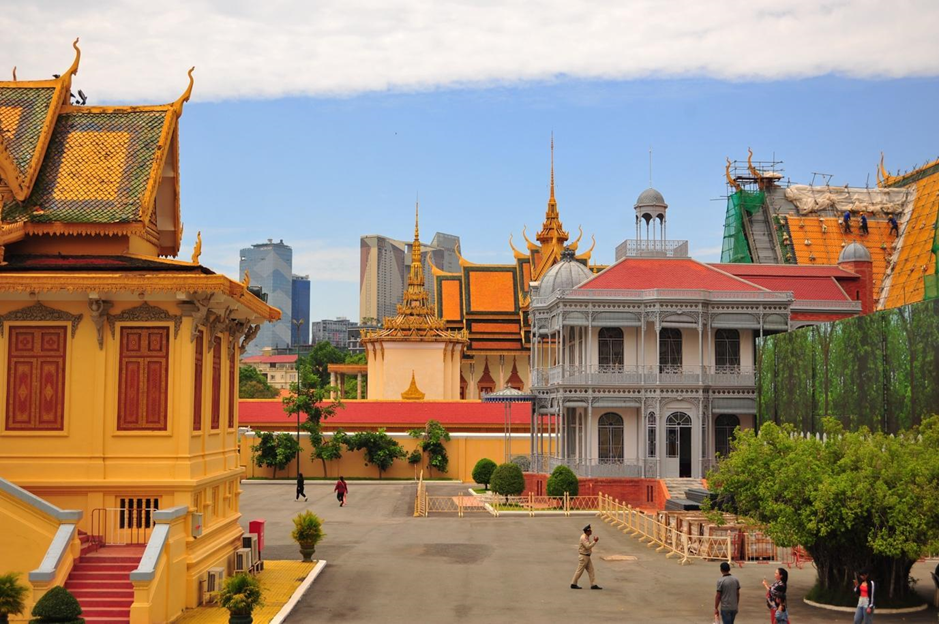Khao-I-Dang: a complex refuge marked by abuse and crime
- Editorial team

- Aug 20
- 3 min read
On the border between Thailand and Cambodia, the Khao-I-Dang (KID) refugee camp was established between 1979 and 1993 as the oldest and most iconic sanctuary for Cambodians fleeing the war and atrocities of the Khmer Rouge regime.

While Khao-I-Dang was a fragile haven for thousands of exiles, it was also the scene of serious abuses, including internal crime and abuse of power by Thai soldiers.
From its earliest days, Khao-I-Dang became a crucial entry point for Cambodians fleeing the conflict with Vietnam and the terror of the Khmer Rouge regime. However, the reality in the camp quickly became far from that of an ideal refuge. Overcrowding combined with the constant arrival of refugees seeking asylum created a climate conducive to trafficking, theft, extortion and various forms of violence. The camp, divided into several sections, had become an unstable microcosm where despair fuelled a clandestine network of illicit activities.
Refugees, often destitute, were sometimes forced to resort to these activities to survive in this overcrowded place. Black markets, smuggling and the worst forms of predation were commonplace. In this context, internal tensions escalated, fuelling a climate of insecurity that put a strain on the fragile humanitarian organisation.
But beyond this endemic crime, another dark aspect taints the camp's history: the abuses perpetrated by some Thai soldiers.
Tasked by the government with the administration and security of the camp, these soldiers were accused, according to testimonies gathered from former refugees and various humanitarian organisations, of physical abuse and verbal violence against the occupants. These acts included arbitrary arrests, beatings, and abuse of power in the repression of any form of dissent or protest against living conditions.
This situation created a double trap for the refugees, who, in addition to fleeing war, were subjected to both the brutality of their past and the harshness of their ‘refuge.’ The Thai administration and the UNHCR, although committed to maintaining security and providing assistance, faced serious difficulties in countering these abuses in a tense geopolitical context and with limited resources.
Furthermore, the deplorable living conditions – strict water rationing, precarious housing and limited access to health services – further exacerbated the tense atmosphere. Yet Khao-I-Dang was also a place of hope and resilience. Hundreds of international NGOs and humanitarian groups worked tirelessly to provide medical care, education and food assistance. The presence of qualified Cambodian personnel in various fields facilitated, to some extent, the day-to-day management.
Despite this, the situation reached a breaking point in the 1980s. The gradual closure of the camp to new arrivals in January 1980, the reduction in population through resettlement or forced repatriation, and growing pressure from the Thai authorities to close Khao-I-Dang created a climate of protest among the refugees. Several demonstrations were organised to denounce these repatriation measures, which were perceived as forced, further intensifying military repression.
The camp was finally closed in 1993, but for many it remains a powerful symbol of both the Cambodian tragedy and the monumental challenges faced by the refugees and the international community. Beyond their suffering, the inhabitants of Khao-I-Dang lived in a constant state of ambivalence between hope and oppression, humanity and violence, security and violence, both internal and external.
Thus, the story of Khao-I-Dang reveals that refugee camps, far from being mere sanctuaries, can become places where suffering, injustice and the struggle for human dignity coexist — an essential reminder of the complexity of protracted humanitarian crises and the shared responsibilities for protecting the most vulnerable.
This memory remains an essential lesson on the precautions that must be taken in the management of refugees, particularly in the face of the risks of abuse and criminal behaviour, even in places that are supposed to be the most protected and humanitarian.







Comments